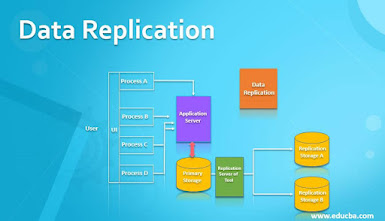Streamlining Data Integration with ETL in AWS: A Comprehensive Guide
Introduction:
In today's data-driven world, organizations need efficient and reliable methods to integrate and transform their data. ETL (Extract, Transform, Load) plays a vital role in this process, enabling businesses to extract data from various sources, transform it into a usable format, and load it into a target destination. AWS (Amazon Web Services) offers a robust ETL solution, empowering organizations to seamlessly integrate and manage their data. In this article, we'll explore the benefits and best practices of ETL in AWS.
What is ETL in AWS?
ETL in AWS refers to the process of extracting data from different sources, transforming it into a consistent format, and loading it into AWS data services or other target destinations for analysis, reporting, or storage. AWS provides a suite of services, such as AWS Glue, AWS Data Pipeline, and AWS Database Migration Service (DMS), that simplify and automate the ETL process.
Benefits of ETL in AWS:
Scalability: AWS offers scalable infrastructure, allowing organizations to handle large volumes of data and accommodate growing data needs. With ETL in AWS, businesses can scale their ETL workflows up or down based on demand, ensuring optimal performance and cost-efficiency.
Flexibility: AWS provides a wide range of ETL tools and services, offering flexibility to choose the most suitable solution for specific data integration requirements. Whether it's batch processing, real-time streaming, or a hybrid approach, AWS has the capabilities to support various ETL scenarios.
Cost-Effectiveness: ETL in AWS offers cost advantages through pay-as-you-go pricing models and the ability to scale resources based on actual usage. Organizations can leverage AWS's serverless computing capabilities to reduce infrastructure costs and pay only for the resources consumed during the ETL process.
Data Security and Compliance: AWS prioritizes data security and compliance. Organizations can leverage AWS's robust security features, including encryption, access controls, and monitoring, to ensure the confidentiality and integrity of their data. AWS also provides compliance certifications for various regulatory standards.
Integration with AWS Services: ETL in AWS seamlessly integrates with other AWS services, such as Amazon S3 for storage, Amazon Redshift for data warehousing, and Amazon Athena for query and analysis. This integration enables organizations to build comprehensive data pipelines and leverage AWS's advanced analytics capabilities.
Best Practices for ETL in AWS:
Data Pipeline Design: Before implementing ETL in AWS, organizations should carefully design their data pipelines. This involves identifying data sources, defining data transformation rules, and determining the target destination. Consider factors such as data volume, frequency of updates, and data quality requirements during pipeline design.
Data Transformation: Data transformation is a critical step in the ETL process. Organizations should define clear rules and transformations to ensure data consistency and quality. AWS Glue provides a powerful data catalog and transformation capabilities to simplify the transformation process.
Error Handling and Monitoring: Implement robust error handling mechanisms to detect and handle errors during the ETL process. Set up comprehensive monitoring and logging to track the performance, data quality, and overall health of the ETL workflows. AWS CloudWatch and AWS Glue Job Bookmarks are useful tools for monitoring and error handling.
Data Validation and Quality Assurance: Validate and verify the accuracy and integrity of the data after each ETL step. Implement data quality checks and validation routines to identify anomalies, duplicates, and inconsistencies. AWS provides services like AWS Glue DataBrew and AWS Glue Data Catalog that help ensure data quality and integrity.
Performance Optimization: Optimize the
performance of ETL in AWS by leveraging AWS's scalable resources, parallel
processing, and optimized data formats.




Comments
Post a Comment